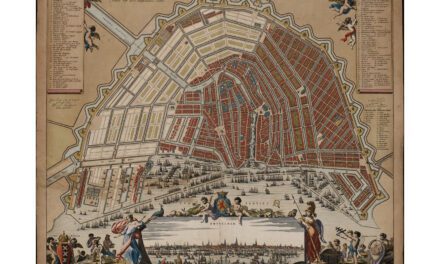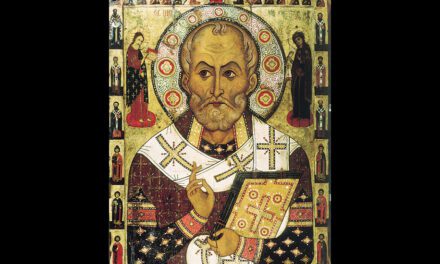History Guild General History Quiz 95
See how your history knowledge stacks up!
Want to know more about any of the questions? Once you’ve finished the quiz click here to learn more.
Have an idea for a question? Suggest it here and we’ll include it in a future quiz!
The stories behind the questions
1. For what is Jan Hus most famous?
Church reform – Hus was a Czech theologian and philosopher who became a Church reformer and the inspiration of Hussitism, a key predecessor to Protestantism. In 1415 he was burned at the stake for heresy against the doctrines of the Catholic Church after speaking against the selling of indulgences at the Council of Constance. After Hus was executed, the Czech Hussites refused to elect another Catholic monarch and defeated five consecutive papal crusades between 1420 and 1431 in what became known as the Hussite Wars.
2. Who wrote the man in the Iron Mask?
Alexandre Dumas – The Man in the Iron Mask was an unidentified prisoner who was arrested in 1669 or 1670 and subsequently held in a number of French prisons, including the Bastille and the Fortress of Pignerol. Known for remaining unidentified due to the veil worn over his face when in public throughout his time in prison, he was held in the custody of the same jailer, Bénigne Dauvergne de Saint-Mars, for a period of 34 years. It is now thought that his identity was being kept a secret to enhance the standing of his jailer, who claimed to be charged with the imprisonment of an unidentified senior aristocrat.
3. How many people were killed in Derry on Bloody Sunday, 1972?
13 – British soldiers from 1st Battalion, Parachute Regiment shot 26 unarmed civilians during a protest march, killing 13. Bloody Sunday came to be regarded as one of the most significant events of the Troubles, it was the highest number of people killed in a shooting incident during the conflict.
4. When did the Euro first enter circulation?
2002 – Read more about the history of the Euro here.
5. Which ship, launched in 1906, made all previous battleships obsolete?
HMS Dreadnought – The ship’s entry into service in 1906 represented such an advance in naval technology that her name came to be associated with an entire generation of battleships, the “dreadnoughts”, as well as the class of ships named after her. Dreadnought was the first battleship of her era to have a uniform main battery, rather than having a few large guns complemented by a heavy secondary armament of smaller guns. She was also the first capital ship to be powered by steam turbines, making her the fastest battleship in the world at the time of her completion.
6. Where did the HMS Bounty mutineers settle?
Pitcairn Island – Lieutenant William Bligh commanded the HMS Bounty, tasked with bringing breadfruit from Tahiti to the Caribbean. It was a small ship, with a crew of only 44. After visiting Tahiti a small group of mutineers lead by acting-Lieutenant Fletcher Christian seized the ship, planning on remaining in the south Pacific. The majority of the crew were opposed to Christian’s mutiny. Christian placed Bligh and 18 loyal crew in the largest of the ship’s boats and set them adrift. At least four more loyal crew wished to remain with Bligh, but there wasn’t enough room in the boat.
In an example of magnificent navigation and seamanship Bligh and the loyal crew sailed the open boat over 3,500 nautical miles to the Dutch colony of Coupang, Timor. From there they returned to England. Bligh was subject to court-martial for the loss of Bounty, he was honourably acquitted of responsibility for the loss and was promoted to post-captain.
Christian and the mutineers sailed to Tahiti, with some choosing to remain there. Christian and the remaining mutineers kidnapped 20 Tahitians and sailed to Pitcairn Island, where the burned the HMS Bounty and established a settlement. In the following four years Christian and all bar two of the mutineers were killed, either by each other or the Tahitians they had kidnapped. The children born of their Tahitian captives, and some of the Tahitians, survived. They established the population of Pitcairn Island which persists to this day.
The admiralty dispatched HMS Pandora to track down the mutineers. This visited Tahiti and arrested all the mutineers they found there, but didn’t visit Pitcairn Island. British warships first visited Pitcairn Island in 1814, discovering a population of 46, with only one of the mutineers alive.
7. Which country attempted to prevent the ‘domino theory’ from occurring?
USA – Domino theory and US foreign policy.
8. Which war caused the deaths of the most Africans?
Congo War – 5.4 million people died between 1996 and 2006 in the deadliest war in African history.
9. Which of these people was the first to be assassinated?
John F. Kennedy – 1963
Malcolm X – 1965
Martin Luther King Jr. – 1968
Indira Gandhi – 1984
10. Who was the only president of the Confederate States of America, also known as the Confederacy?
Jefferson Davis – The Confederacy was formed on February 8, 1861 by seven slave states: South Carolina, Mississippi, Florida, Alabama, Georgia, Louisiana, and Texas. Convinced that white supremacy and slavery were threatened by the November 1860 election of Republican candidate Abraham Lincoln to the U.S. presidency, on a platform which opposed the expansion of slavery into the western territories, the Confederacy declared its secession from the United States. It’s stated position was that “upon the great truth that the negro is not equal to the white man; that slavery, subordination to the superior race, is his natural and normal condition.”
Civil war began shortly after, and continued until 1865, when the Confederacy’s civilian government dissolved into chaos. The war lacked a formal end, with Confederate forces surrendering or disbanding sporadically throughout most of 1865. Confederate President Jefferson Davis’s administration declared the Confederacy dissolved on May 5 1865.





